Kartik Purnima in Pushkar, the larges market in India#
Kamels, Folklore and Entertainment#
By Günther JontesAll photos were taken by the author in the years 1986/87, 2001 and 2006 aufgenommen. They are from the archive "Pictureflood Jontes".
Pushkar Pushkar, India is one of the temples that are dedicated to the hinduistic god Brahma. A holy small lake nearby is another big attraction for pilgrims, but the highlight is the largest camel market in all of Asia that takes place here every year in fall. Thousands of people come to this "festival of Pushkar": Peasants, people raising, selling or buying camels, or other goods. Some of the camels are real beauties and there is thus more than the usual negotiating and haggling over quality and prices.
Pushkar is quite poetic since it means "Lotusblossom". It was in the holdy pond that god Brahma, one of the three major gods of Hinduism, designated the place as holy by dropping a Lotusflower.


Camels and dromedars (the dromedar also called the Asian camel, with a single hump) are usually associated with the notion of the deserts of northern Africa or parts of the near East. However, increasing motorization has made them quite unimportant in those areas except for racing events and as part of floklore. In India the situation is different. "The ship of the desert" as it sometimes called is still essential for agriculture and transport in large parts of Rajisthan. There is still a living culture behind those proud animals that one meets again and again and that increases the flair of Rajistahn, most likely the most interesting province of India.
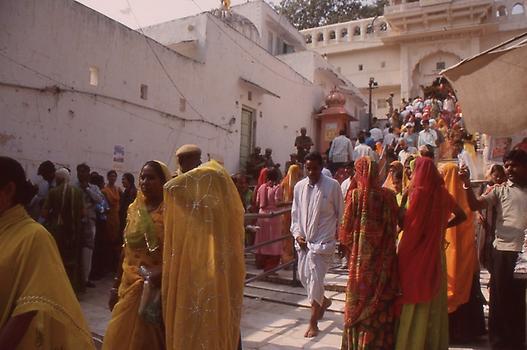
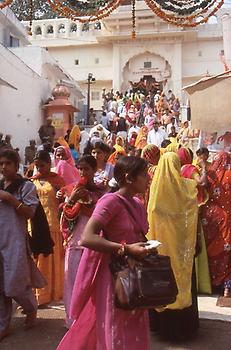
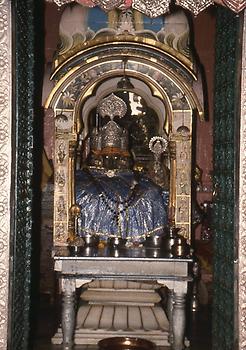
The market festival, called Kartik Purnima, takes always place during the full moom in November.
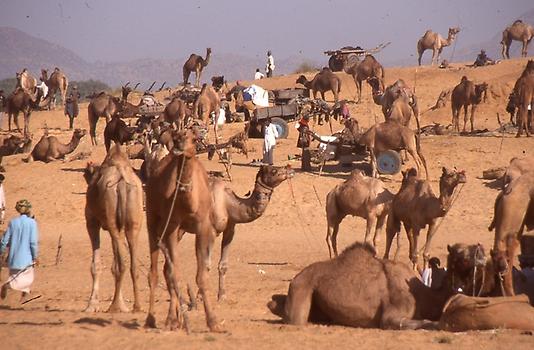


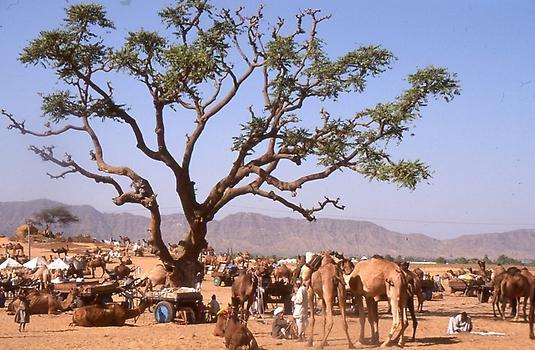
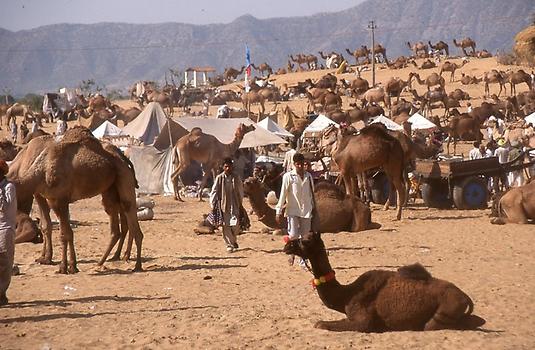
The central element is of course the animal. To increase its beauty it is decorated in a variety of ways. Westerners are not inclined to call the head of the camel "beautiful". It is constantly grinding its big yellow teeth; the toogle that is driven brutally through the nose of the animal so it can be better guided, and its haughty if not conceited look do not compare well with the noble beauty we know from horses. Among Muslims there is a good explanation why camels look conceited.
After all everyone knows that Allah has 1000 names. But humans know only of them. The reaining name is only known to camels so it looks down with contempt on stupid humanity.
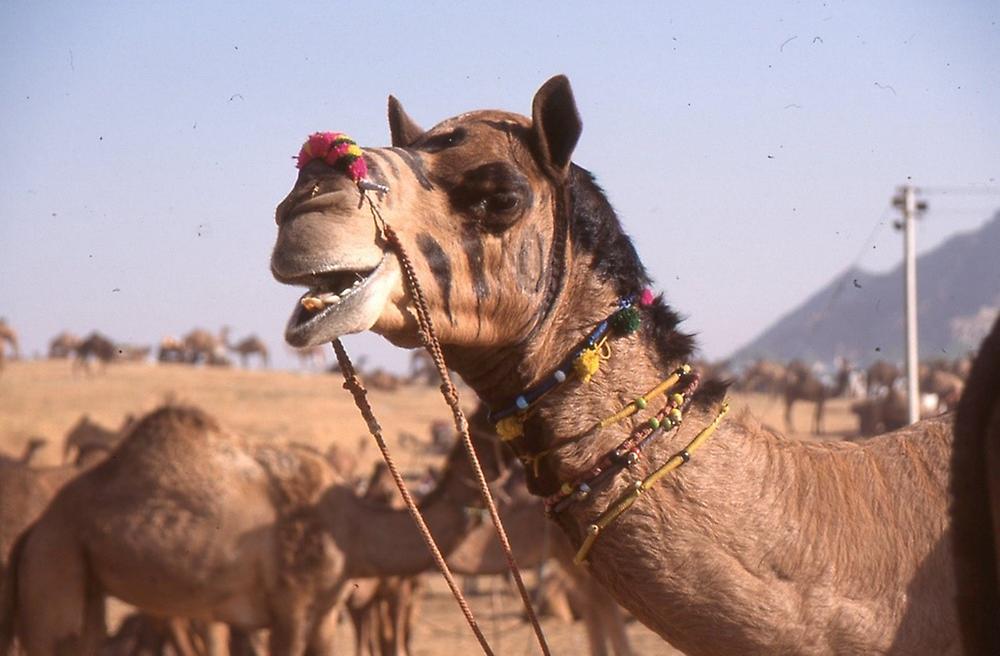
- To pictures of decorated camels
- To pictures of traditionally clothed people
- To pictures of the market in general and how food is prepared for all attending
- To pictures of the life in and near the market, during day and during night